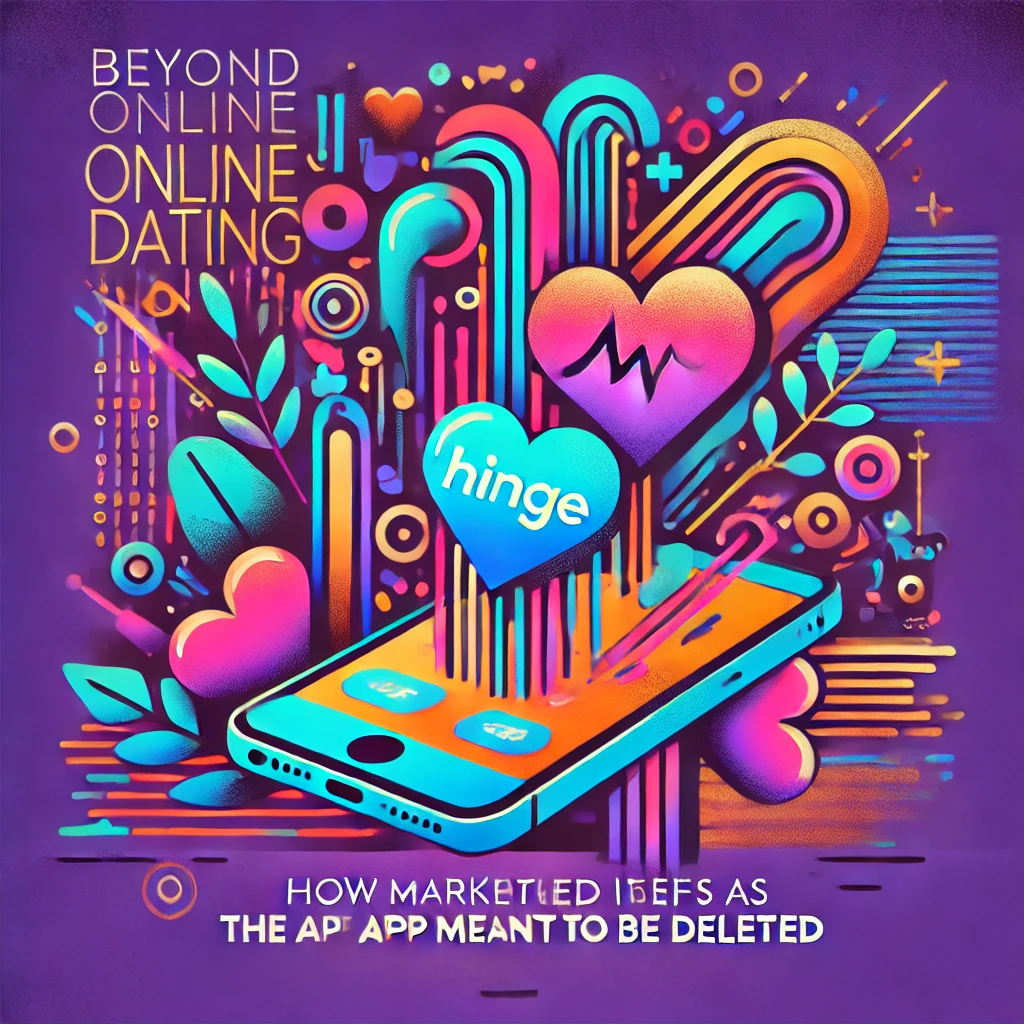When it comes to online dating, the market is crowded, with dozens of apps vying for users' attention. 😅💻
But one app has managed to stand out by positioning itself as more than just a digital matchmaking service. 🌟
Hinge, dubbed the ‘app meant to be deleted,’ has captivated millions by promising users something more meaningful—a reason to leave the platform forever. 🚀
How did Hinge pull off this genius marketing coup, and what can startup founders learn from it? 🤔
Craft a Unique Value Proposition
Hinge’s slogan, “Designed to be deleted,” wasn’t just clever—it was disruptive. 💥 While other dating apps focused on increasing user engagement, Hinge boldly proposed the opposite. 🎯
This differentiation made the app instantly memorable. 🧠
Takeaway: Identify a gap in your market and fill it with a unique value proposition. 🔍 Don’t just be better—be different. Ask yourself, what’s the status quo in your industry, and how can you challenge it? 🏆
Create a Compelling Brand Story
Hinge’s CEO, Justin McLeod, has a captivating personal story that aligns with the app's mission. 🧑💼❤️
After reconnecting with his college sweetheart, he redesigned Hinge to focus on building deeper connections. His story became a cornerstone of the brand’s identity, making the mission feel genuine. 🌈
Takeaway: Authenticity resonates. 🎤 Share your story, your ‘why,’ with your audience. Show them that your startup is more than just a product; it's a passion project with a purpose. 🌱
Align Marketing and Product
Hinge’s slogan wasn’t just marketing fluff—the product was designed to support it. 💡 With features like prompts for better conversations and limited likes to encourage thoughtful swiping, the app’s design encouraged users to find meaningful connections rather than endless matches. 💖
Takeaway: Ensure your product aligns with your marketing message. 🎯 If you’re promising an easier workflow or a more personalized experience, make sure your product delivers. 💪
Consistency builds trust and brand loyalty. 🙌
Leverage Social Proof
Hinge invested in user testimonials and success stories, using them in their advertising campaigns. 👏
They shared real couples’ experiences, making it clear that their app works. 💍
Takeaway: Use testimonials, case studies, and user stories to show your product’s impact. 💬 This kind of social proof can be a powerful conversion tool, especially in saturated markets. 💥
Implement Smart, Targeted Advertising
Hinge’s advertising was intelligent and strategic. Instead of generic ads, they used data to create targeted campaigns. 📊
Their ads were funny, relatable, and spoke directly to their audience’s pain points. 😂
Takeaway: Use data to tailor your marketing efforts. 🔍 Understand your audience deeply and create content that speaks to their specific needs and desires. 🧠
A well-targeted campaign can turn casual interest into commitment. 💕
Invest in Influencer Marketing
Hinge partnered with influencers to reach a broader audience, tapping into their followers' trust. 💥
Influencers shared their personal dating experiences and how Hinge played a role, creating authentic, relatable content. 👫
Takeaway: Partner with influencers who genuinely align with your brand. 🤝 Authenticity is key—users can spot inauthentic promotions a mile away. 🚶♀️
Choose partners who can create content that feels real and resonates with your audience. 🎥
Optimize for SEO
Hinge invested in content marketing and SEO, creating blog posts, relationship guides, and FAQs that answered common dating questions. 📚 This positioned them as a thought leader in the dating space and improved their search visibility. 📈
Takeaway: Don’t underestimate the power of content. 📖 Create valuable, SEO-optimized content that addresses your audience’s questions and concerns. 🎯
This not only drives traffic but also establishes you as an authority in your industry. 🌟
Use Data for Continuous Improvement
Hinge used user feedback and data analytics to refine their app continually. 🔄
They didn’t just launch and forget—they adapted based on what their users were saying and how they were using the app. 🧐
Takeaway: Always be iterating. 🛠️ Use data to understand how your users interact with your product. 📲
Conduct surveys, analyze behavior, and be willing to pivot based on the insights you gather. 🔄
Build a Community
Hinge has successfully built a community around its brand. They host events, encourage users to share their success stories, and engage with their audience on social media, creating a loyal user base. 📱
Takeaway: Create opportunities for your users to engage with your brand beyond the product. 🤝
Build forums, host webinars, or organize meetups. A strong community can turn customers into advocates. 💥
Capitalize on Virality
Hinge's unique positioning and clever campaigns made it inherently shareable. From catchy slogans to relatable ads, users shared Hinge content across platforms, increasing organic reach. 📲💬
Takeaway: Design your marketing for virality. 🚀 Use humor, relatability, or a unique perspective that encourages sharing. Word-of-mouth is one of the most effective marketing channels. 📢
Emphasize a Positive Mission
Hinge’s mission is to get users off the app and into meaningful relationships. 💍 This positive mission created goodwill and aligned the company with its users' values. ❤️
Takeaway: What’s the broader mission behind your startup? 🌍 Communicate it clearly and ensure it resonates with your audience’s values. 💡
A strong mission can elevate your brand beyond a product or service to a movement. 💪
Prioritize User Experience
From intuitive design to responsive customer support, Hinge prioritized user experience. 💻
This ensured that users didn’t just download the app but kept using it and recommending it to others. 📲
Takeaway: Invest in a seamless user experience. 💎 Every touchpoint, from onboarding to customer service, should be exceptional. 🏅
A great experience fosters loyalty and advocacy. 🏆
Conclusion
Hinge’s success wasn’t just about a clever slogan—it was about aligning every aspect of their brand and product with that promise. 🌈
For startup founders, the lesson is clear: identify your unique value, tell a compelling story, and deliver on your promises. 💯
When your product and message are in sync, you don’t just create customers—you create believers. 🙌










